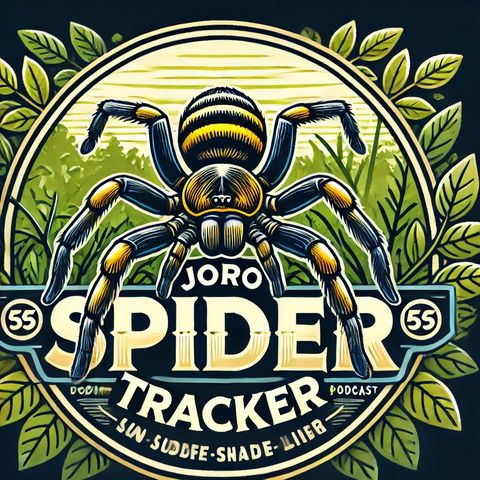"Joro Spider's Eastward Expansion: Unraveling the Ecological Impact of a Non-Native Marvel"

Iscriviti gratuitamente
Ascolta questo episodio e molti altri. Goditi i migliori podcast su Spreaker!
Scarica e ascolta ovunque
Scarica i tuoi episodi preferiti e goditi l'ascolto, ovunque tu sia! Iscriviti o accedi ora per ascoltare offline.
Descrizione
The Joro spider, a species native to East Asia, is making headlines as it advances across the United States, particularly along the East Coast. This spider, scientifically known as Trichonephila...
mostra di piùOriginally from Japan, China, Korea, and Taiwan, Joro spiders have been part of the local ecosystems in these areas, playing a pivotal role in their habitats. They were first reported in the United States in Georgia around 2014. Since then, their presence has expanded, with sightings increasingly reported in Maryland and as far up the East Coast as New Jersey. Researchers suggest that the spider's success in spreading northward can be attributed to its resilience and ability to survive colder climates. This adaptability is unusual for spiders, whose populations are generally more temperature-sensitive.
The expansion of the Joro spider has been met with mixed reactions. On one hand, they contribute positively to their new environments by helping control pest populations, which benefits local agriculture and garden health. Their webs, often large and intricate, are not just marvels of natural engineering but also act as effective traps for many insects that are considered pests.
However, the introduction of non-native species can also disrupt local ecosystems. The potential impact of the Joro spider on local insect populations and other native species is still under study, with scientists striving to understand the full ecological effects. Concerns typically revolve around whether these spiders might outcompete native species for resources or introduce new challenges to the existing wildlife.
In cases of non-native species like the Joro spider, public reaction can often sway towards alarm, prompted by the spider's impressive size and rapid spread. However, it is essential to approach such situations with a scientific perspective, focusing on understanding the species' role in its new environment rather than defaulting to fear. By closely monitoring its impact and studying its interactions within local ecosystems, scientists and ecologists can better manage the presence of Joro spiders and ensure that any potential threats to biodiversity are mitigated.
In summary, while the arrival and spread of the Joro spider in the United States pose interesting questions for ecologists and conservationists, their presence offers an opportunity to study the adaptation of species to new environments. Their benign nature towards humans and potential benefits as natural pest controllers add complexity to the narrative, underscoring the nuanced roles that non-native species can play in their adopted ecosystems.
Informazioni
| Autore | QP-4 |
| Sito | - |
| Tag |
Copyright 2024 - Spreaker Inc. an iHeartMedia Company
